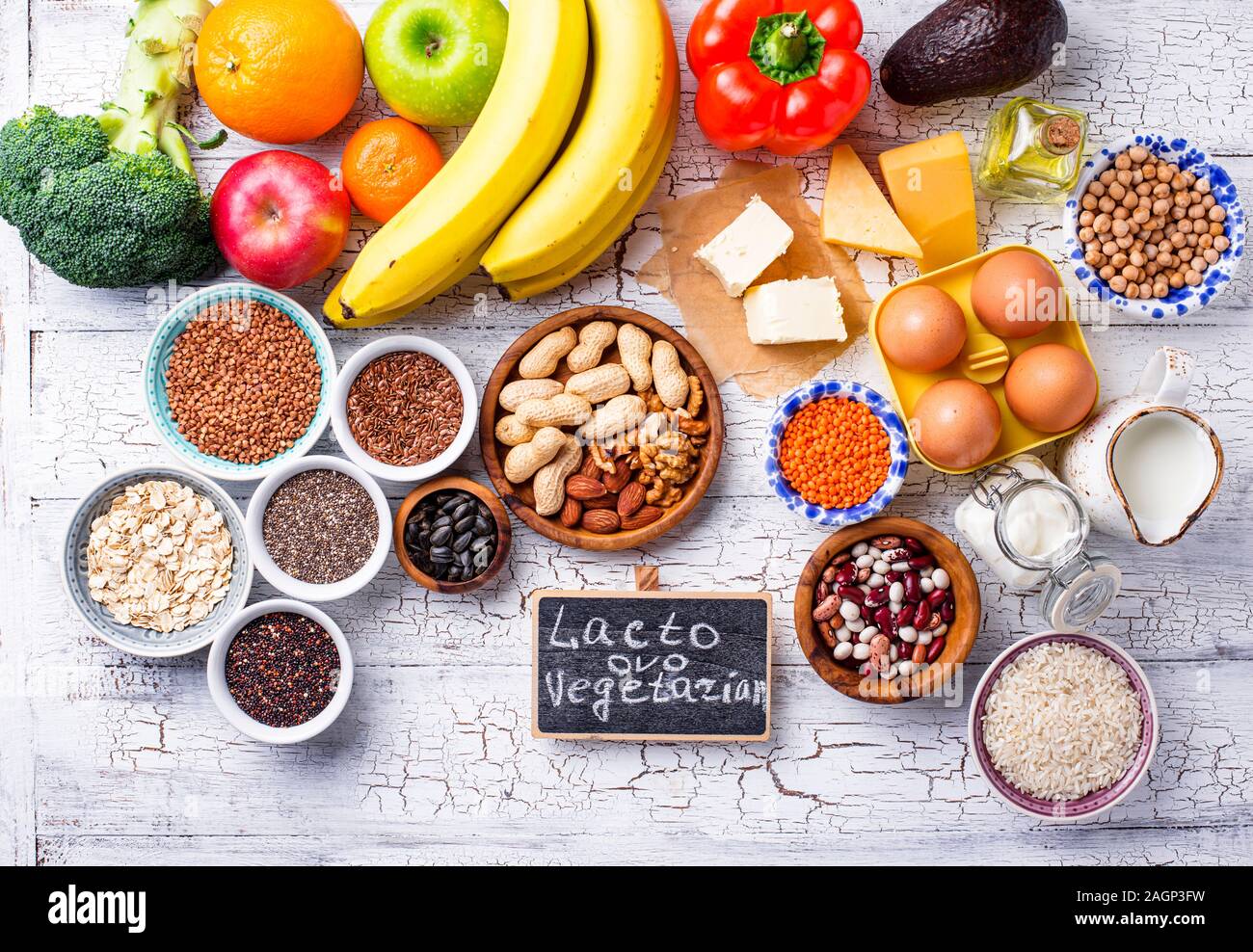
Taking the leap to a vegan diet can be a bit daunting, but luckily there are some basic staples that can help. There are many ingredients that you can buy to support your transition to a vegan lifestyle, including fruits and vegetables as well as vegan cheese. Many of these ingredients also provide essential nutrients.
These essentials can be found in many grocery stores. Many of these essentials are also available online. Regardless of where you shop, make sure to read labels carefully. You don't want to purchase products with a lot of ingredients, such as dairy, that contain artificial additives or are processed with chemicals. These products can also be found in Indian food stores or Asian markets.
These ingredients can add texture to vegetarian dishes. Dulse or arrowroot can be used in recipes that include eggs. In the same way, oil can be replaced with applesauce. Other ingredients, like chia seeds, linseed, and bananas, can replace eggs in baked goods.
The nutritional yeast is an essential pantry item. This vitamin B-packed flake can be sprinkled on mashed potatoes or used as a topping in vegan cheese dressings. It can also be used in place of tofu as a topping. It can be bought at your local grocery shop or ordered online.

Nuts are another staple of your pantry. Nuts are versatile and can be used for a wide variety of dishes. Nuts provide a good source of healthy fats. They can also be used as snacks. For a longer shelf life, you can store them in the freezer. They can be used for baking. No matter if you bake cookies or cakes, dates are great as a crust binder.
Nut butters can be a good option if you eat plant-based meals. They're a delicious spread that can replace butter in baking. Other nut butters that you might like to buy include almond butter or sunflower seed butter.
Rice and lentils make great pantry staples. These proteins are rich in protein, making them a good choice for vegetarians. These proteins are easy to prepare and can be combined with other foods to make a healthy meal. They are also free of gluten, making them a great choice to those who have gluten intolerance.
Couscous can be a great choice for vegans. This grain is gluten-free and has a consistency similar to couscous. This grain is easy to prepare. Just boil water for five minutes.
Kombu is another important pantry item. It adds flavor to beans and legumes and increases their digestibility. Kombu is also great for adding beneficial minerals to your diet, like calcium and iron.

Many grocery stores have a selection of vegan cheeses. Safeway and Vons also offer dairy-free options. Daiya Cheezy Mac (and Alfredo) are other great choices.
Also, you might want to consider vegan butters like Earth Balance. These delicious spreads can also be made without dairy. Artisana and other brands also offer vegan Nutella spreads.
FAQ
Do I need to count calories?
You might be asking "What is the best diet?" or "is counting calories necessary?" It depends on several factors such as your current health, personal goals, preferences, and overall lifestyle.
The Best Diet for me - Which One Is Right for You?
The best diet is dependent on my current health status, personal goals, preferences, and overall lifestyle. There are many diets available, some good and others not so good. Some diets work better than others. What can I do to make the right choice? How do I make the right choice
These are the questions this article will answer. It starts with a brief introduction of the different types of diets available today. Next, we'll discuss the pros and cons for each type of diet. Finally, we'll look into how to choose the best one for you.
Let's start by taking a look at the various types of diets.
Diet Types
There are three types, low-fat, high-protein, or ketogenic diets. Let's discuss them briefly below.
Low Fat Diets
A low fat diet reduces the amount of fats you eat. This is accomplished by decreasing the intake of saturated fats like butter, cream cheese, and other dairy products. You can replace them with unsaturated oils (olive oil and avocados) People who are looking to lose weight quickly and easily will benefit from a low-fat diet. This type of diet can lead to constipation and heartburn as well as indigestion. In addition, it may lead to vitamin deficiencies if a person doesn't get enough vitamins from their food.
High Protein Diets
High protein diets discourage carbohydrates and encourage the use of proteins. These diets often have higher levels of protein than most other diets. These diets are designed to build muscle mass and help you burn more calories. One problem is that they may not provide adequate nutrition to someone who needs it. Also, they tend to be very restrictive, so they aren't suitable for everyone.
Ketogenic Diets
Also known as keto diets, ketogenic diets are also called keto diets. They are high in fat and moderate in protein and carbs. Athletes and bodybuilders use them because they allow them more time and harder training without getting tired. However, they must be used with caution to avoid nausea, headaches and fatigue.
How can I tell what is good for me?
Listen to your body. When it comes to your body's needs for exercise, food, or rest, it is the best. Your body will tell you what to do so that you don't go overboard. Listen to your body and make sure you're doing everything you can to stay healthy.
What can you do if your immune system is weak?
Human bodies are made up of trillions upon trillions of cells. These cells collaborate to form tissues and organs that perform specific functions. Another cell takes its place when a cell dies. Chemical signals, called hormones, allow cells to communicate with each other. All bodily processes are controlled by hormones, including metabolism and immunity.
Hormones, chemicals that are secreted throughout the body by glands, are chemicals. They travel through blood stream and act as messengers that control the function of our bodies. Some hormones are produced internally while others are made outside of the body.
The hormone-producing glands release their contents into bloodstream. This is when hormone production starts. Once hormones are released, they move through the body to reach their target organ. Some hormones may only remain active for a limited time. Others hormones are more active and have a longer life expectancy. They can still influence the body's functions long after they have been eliminated from the bloodstream.
Some hormones can be produced in large amounts. Others are only produced in very small quantities.
Some hormones only are produced during certain periods of life. Estrogen is one example. It's produced in puberty, pregnancy and menopause. Estrogen aids women in developing breasts, maintaining bone density and preventing osteoporosis. Estrogen promotes hair growth, and skin stays soft and smooth.
What are the 7 keys to a healthy, happy life?
-
Take care of your health
-
Exercise regularly
-
Sleep well
-
Get plenty of water.
-
Get adequate sleep
-
Be happy
-
Smile often
Statistics
- The Dietary Guidelines for Americans recommend keeping added sugar intake below 10% of your daily calorie intake, while the World Health Organization recommends slashing added sugars to 5% or less of your daily calories for optimal health (59Trusted (healthline.com)
- WHO recommends consuming less than 5% of total energy intake for additional health benefits. (who.int)
- WHO recommends reducing saturated fats to less than 10% of total energy intake; reducing trans-fats to less than 1% of total energy intake; and replacing both saturated fats and trans-fats to unsaturated fats. (who.int)
- According to the Physical Activity Guidelines for Americans, we should strive for at least 150 minutes of moderate intensity activity each week (54Trusted Source Smoking, harmful use of drugs, and alcohol abuse can all seriously negatively affect your health. (healthline.com)
External Links
How To
What does the "vitamin") mean?
Vitamins are organic compounds that can be found in foods. Vitamins allow us to absorb nutrients from food. Vitamins cannot come from the body so food must provide them.
There are two types vitamins: water soluble or fat soluble. Water-soluble vitamins dissolve easily when they are dissolved in water. Some examples include vitamin C,B1 and B2 vitamins (thiamine), B2 and riboflavin, B3 and niacin, B6 vitamins (pyridoxine), B6 vitamins (niacin), folic acids, biotin, pantothenic acids, and Choline. The liver and fatty tissues are home to fat-soluble vitamins. Some examples include vitamin D and E, K, A, beta carotene, and A-vitamins.
Vitamins are classified according their biological activity. There are eight major vitamin groups:
-
A - Essential for healthy growth and health maintenance.
-
C – essential for proper nerve function.
-
D - essential for healthy teeth and bones.
-
E - required for good vision & reproduction.
-
K - essential for healthy nerves, muscles, and joints.
-
P – Vital for building strong bones.
-
Q – aids digestion and absorption.
-
R - necessary for making red blood cells.
The recommended daily allowance for vitamins (RDA) varies according to age, gender, or physical condition. The U.S. Food and Drug Administration sets RDA values.
For adults aged 19 and older, the RDA for vitamin B is 400 micrograms daily. Pregnant mothers need 600 micrograms a day to ensure fetal growth. Children ages 1-8 require 900 micrograms per day. Infants under one year of age require 700 micrograms per day, but this amount decreases to 500 micrograms per day between 9 months and 12 months of age.
Children ages 1-18years who are obese need 800 micrograms per day while those who are overweight need 1000 micrograms per day and children who are underweight need 1200 micrograms per day to meet their nutritional needs.
Children aged 4-8 years old who have been diagnosed as having anemia require 2200 micrograms of vitamin C per day.
2000 micrograms daily is required for adults over 50 to maintain their general health. Because of their higher nutrient needs, women who are pregnant or nursing need 3000 mg per day.
Adults over 70 years of age need 1500 micrograms per day since they lose about 10% of their muscle mass each decade.
Women who are pregnant, nursing or breastfeeding need more than the RDA. Pregnant and breastfeeding women require 4000 micrograms each day during pregnancy and 2500 Micrograms each day after birth. Breastfeeding mothers need 5000 mg per day when breastmilk is being produced.